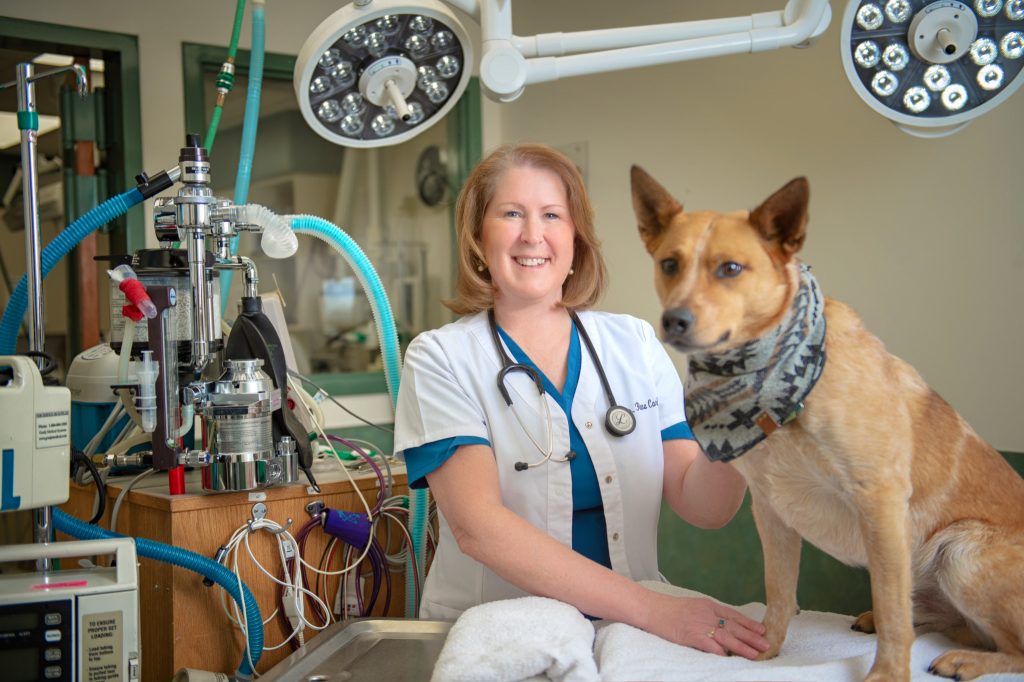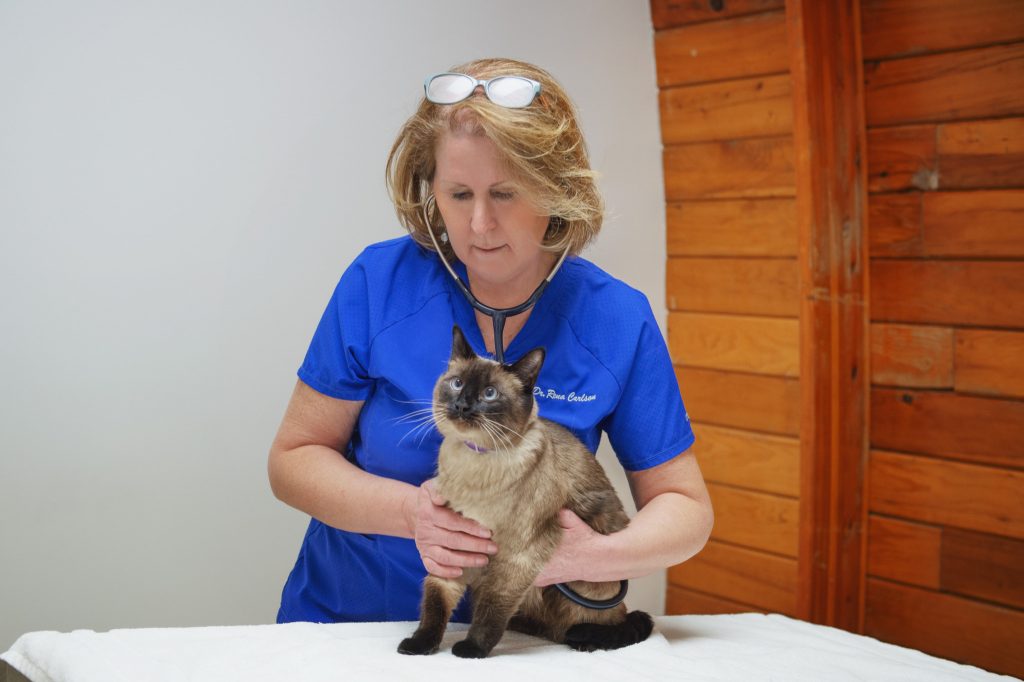
If you had told Rena Carlson, DVM, 30 years ago she would one day lead the American Veterinary Medical Association (AVMA), she would not have believed you. “I would have never dreamed [about it],” Dr. Carlson says. “It was beyond my wildest dreams.” However, under the guidance of a mentor, Dr. Carlson embraced the importance of active participation in organized veterinary medicine.
In a span of three decades, Carlson’s involvement in associations such as the Eastern Idaho Veterinary Medical Association and the Idaho Veterinary Medical Association, coupled with her dedication to the AVMA, led her to this pivotal role.
“Every step has been a process of being encouraged by others, battling my self-doubt and fear, finding my confidence, and eventually taking a risk,” she says. “I’m so grateful and honored to have been chosen to serve in this important role, at this critical time.”
We caught up with the association’s new president at the AVMA Convention in Denver, Colo., in July to learn more about her leadership style, the changing landscape of the veterinary industry, and AVMA’s current key areas of focus.
1. You have been active in medical associations throughout your career. How has your leadership style changed—or stayed the same—over the years?
Rena Carlson, DVM (RC): Early in my career, many people I saw in leadership roles were very intimidating to me, and it was difficult to see myself in those roles. What has changed is my perception of leadership and how I can be an effective participant in whatever position I am in at any given time. Everyone brings a different style and lens to each role. I honestly don’t really think about myself as a “leader.” I like to connect with people, find their strengths, and learn from them. I often see traits in others I admire and ask myself, “How can I be more
like that?”
All the achievements in my career have come about through working with great teams and inspiring individuals. One of the best things about being a part of those teams has been watching the people I have worked with use their skills and talents and seeing their sense of accomplishment at everything they have done.
2. How do you think your experience and background can influence your AVMA leadership?

RC: Given my background, I can directly relate to and understand the challenges of many different aspects of our profession. Although my background includes companion animal, large animal, lab animal, and research—as well as practice owner and parent—there are many other perspectives that must be at the table for our entire profession to thrive. It is important we consider all disciplines and aspects of the profession as we support our members, and I place a high priority on the importance of bringing diverse thoughts and experiences to every decision.
3. How do you think your leadership can impact the role of women in veterinary medicine?
RC: I love the quote, “Not every day is good, but there is good in every day.” We have hard days in veterinary medicine; but no profession is immune to that. It takes intentional effort, but even on the hard days you can find the joy and satisfaction of helping people and animals, of serving a greater good.
Another important component of my life has been to always find a way to have fun outside of work as well. I encourage people—women and men—to stop looking for some perfect work-life balance that does not exist, and do your best at managing, integrating, and enjoying work, life, and family.
When I came into the profession, I had a very narrow view of my options. It is amazing to see the opportunities available in today’s world. I am inspired by the many women who have carved out and created their own paths to success.
| What’s on the agenda |
| With the many challenges facing the veterinary industry today, what does the AVMA have in the pipeline to address them? Below are answers straight from association president, Rena Carlson, DVM: • Leveraging support staff. “The AVMA is working hard to reinforce the value that veterinary technicians and veterinary technician specialists add to the veterinary healthcare team and how veterinarians can better engage these professionals’ talents to improve both efficiency and quality of veterinary care. Other efforts that can support these team members are the development and expansion of veterinary technology programs, title protection and licensing for veterinary technicians, better recognition and appropriate credentialling of veterinary technician specialists, and improved pay and benefits.” • Diversifying veterinary medicine. “Last December, the AVMA and the Veterinary Medical Association Executives (VMAE) launched “Journey for Teams,” a comprehensive program intended to serve veterinary professionals and workplaces of all kinds, including private practices, animal hospitals, academia, industry, and other settings. Each month, Journey for Teams launches new learning modules that can be completed by veterinary teams in under 15 minutes. The program, which features DEI experts from across the profession, is designed to be practical, actionable, impactful, and extremely user-friendly.” • Empowering new graduates. “We also need to do everything we can to help recent graduates make a successful, healthy transition into their professional careers. The AVMA has recently partnered with MentorVet to launch MentorVet Connect (avma.org/Mentor), which is a structured mentorship program that connects early-career veterinarians with trained mentors. It launched in May 2023, and we already have nearly 100 recent graduates signed up to receive mentoring.” • Health is wealth. “We know that wellbeing also is critically important for our profession. The AVMA has a plethora of wellbeing resources available to members free of charge. These include the AVMA Workplace Wellbeing Certificate Program, which empowers veterinary teams with the knowledge and skills to create a culture of wellbeing in their veterinary workplace, and the AVMA Brave Space Certificate Program, which teaches participants how to gain deeper understanding of the people around us and create healthier, safer, more inclusive veterinary teams, practices, and organizations.” |
4. How do you think AI is changing how veterinarians work?
RC: Artificial intelligence has the potential to help practices with efficiency and client communication, and so much more. There are many AI tools that offer the ability to record examination findings in real time, with dictation software and other tools that can assist with client communication, scheduling, diagnostic test interpretation, and workflow management, all helping to streamline operations at the practice level. AI has the potential to help us deliver better health outcomes for patients, improved service for clients, and greater practice efficiency.
Practices need to determine what aspects of AI make the most sense for them, and then will need to do some homework to determine the best ways to implement it.

This breakthrough technology is exciting; however, it’s still in its infancy, so it’s important to use caution on where and how to employ AI. Veterinarians need to be sure they have a full understanding and knowledge of AI technology. Right now, there is no FDA-approved regulatory framework for AI in veterinary medicine, and ethical considerations need to be part of the equation.
5. What would you say are the bigger issues surrounding vet med?
RC: There is a shortage of trained veterinarians in rural areas of the U.S. and in certain segments of our profession, including food animal, equine, academia, shelters, emergency practices, specialties, and public health. We also have a generalized shortage of veterinary technicians. Each of these challenges has unique causes that require
targeted solutions.
We all start in this profession with a passion. We need to equip veterinarians with the tools they require to manage the rigors of their career and keep that passion alive. We need to set up conditions in which the entire team of veterinary professionals can have a sense of belonging and thrive. This will provide a sustainable future for our colleagues–and is what the AVMA is committed to providing for its members.
| MORE WITH DR. CARLSON |
| VPN Plus+ subscribers can read even more with extra content from this conversation with Dr. Carlson. Not a member yet? Click here to access this and much more. |
